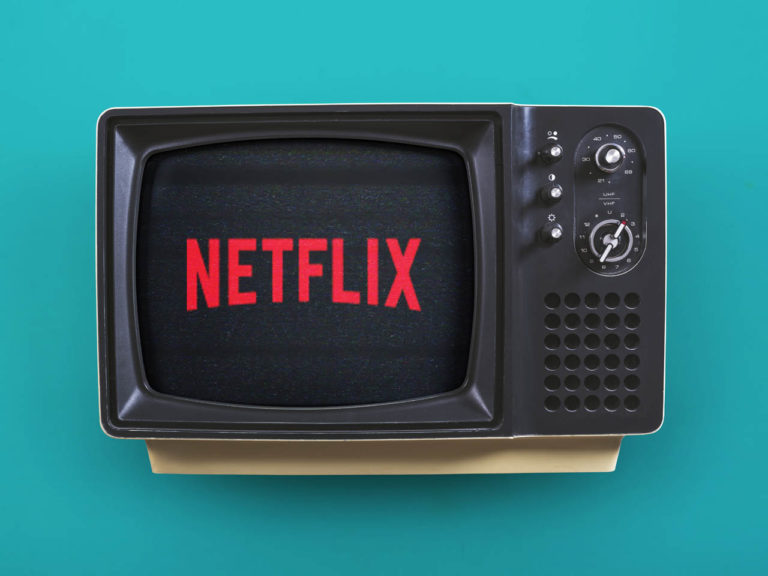
Comic book lettering is perhaps the most under-appreciated creative position in the industry. Every other element on the page can be understood consciously—you like the way the line art or the color looks, you enjoy the dialogue. Even if there are subtleties and subtexts, there’s typically something anyone can understand on the surface.
But lettering, moreso than any other discipline, functions subliminally. There are more obvious aspects, like titles or sound effects, but the bulk of the letterer’s work consists in things that are far less sexy than THWACK and THOOM. As readers, we benefit greatly from well-made, skillfully laid-out balloons, but we typically only take note when something fails. Meanwhile, the lettering professionals responsible for making our favorite books coherent go (mostly) unsung and uncelebrated, because we simply don’t understand just what it is they’re doing for us.
One such lettering professional is Steve Wands. If you’ve been enjoying DC’s Rebirth, you’ve been doing so in part because of his formidable skills. All-Star Batman, The Flash, Gotham Academy, Supergirl, Trinity—all Steve. I love his work, and as I was admiring the latest issue of Trinity, I figured it was time we had a chat. So I reached out to Steve on Twitter and set up an interview, which I’m delighted to share with you here.
Brian Warshaw: What’s your professional background? Did you study graphic design?
Steve Wands: I studied Media Art & Design at County College, and then attended The Joe Kubert School studying Cartoon Graphics.
BW: Do you have any lettering heroes?
SW: If we’re looking back at those who truly made lettering a craft, then I have to mention Gaspar, Costanza, Workman, Klein. On a more personal level, Nick Napolitano, Rob Leigh, Jared K. Fletcher, Kenny Lopez, Patrick Brosseau, Phil Balsman, Travis Lanham, Robert Clark Jr., Sal Cipriano, and Carlos Mangual. I worked with these guys and learned a lot about lettering in the process. Since we’re talking about heroes, I’d be remiss if I didn’t mention the true unsung heroes of comics—the pre-press department.
BW: Was it always your goal to try to break into comics?
SW: Always.
BW: What was your first gig in the industry?
SW: I think it was an issue of Wetworks for WildStorm.
BW: What’s a book that you’re especially proud of?
SW: Right now, I’d have to say All-Star Batman. John Romita, Jr. is one of the biggest reasons I wanted to make comics. Getting to letter him is like a full-circle moment.
BW: What’s your work setup?
SW: I have an iMac, Wacom Intuos tablet, and I use the Adobe Creative Suite. Sometimes I do stuff on the drawing board first.
BW: Have you created any of your own fonts? Any in the works?
SW: Yes. I’m actually designing a set of six fonts for a new venture that should be launching next year.
BW: Do you have any particular philosophy or strategy for balloon layout?
SW: Keep it simple. If it doesn’t read correctly, then it’s wrong, and do it again.
BW: What do you do if the amount of text makes it difficult to avoid covering important artwork? Do you work with the writer to cut it down, or with the artist to figure out what’s the least harmful to block?
SW: Any number of things. You can talk to the writer and editor and see about making cuts. Get creative with finding space on the page. It might even have to come to doing art revisions.
BW: Sound effects are one of those things that remind you you’re in a comic. They can make even the most serious book a bit of fun. How do you approach these? Do you do any hand-drawn stuff?
SW: I consider the look and tone of the book first. I don’t want to give sound effects on say, a Batman book the same look I would for Garfield. I always consider the flow of action when making effects. Never obscure what’s happening. I do some hand drawn effects and custom effects, as well.

BW: You’re doing letters for a number of books, but you’re not using the same fonts for all of them. Each font really seems to mesh well with the rest of the visual and textual content (especially on Supergirl!) How do you decide what to use for your main dialogue/narration fonts?
SW: Thank you! Setting a book apart and giving it a distinct visual look is one of the things I strive for on each title I take on. I just consider things like tone, the art, what potential artists might also be on the title and work from there.
BW: The font used to indicate settings in Trinity #2—it is awfully close to the type used for the word “Action” in the Action Comics logo. I thought it was a stroke of genius on several levels. Can you talk about how you decided to go with that?
SW: Well, you hit it on the head. That was the main impetus. I wanted something classic, that also tapped into the history of the Trinity. It doesn’t get more iconic than Action Comics.

BW: Do you receive much direction or suggestion from Francis?
SW: No. For Trinity, editorial gave me some initial notes and I built the style off of that.
BW: How about other writers and artists? All-Star Batman, for example. How does working with that team differ from working with Francis?
SW: Very different. Francis is basically a one-man band on Trinity, and I’m just making sure the sound is coming through. All-Star Batman is about everybody coming to the book and bringing what makes them distinct individually, and then making it work collectively. It’s rock and roll in comic form. Every team I’m a part of operates differently. The one common thread is passion.
BW: Do you confer with (color artists) Dean (White) or Jordie (Bellaire), or do you pretty much get an otherwise finished book and just do your thing?
SW: Again, it’s all different. With Dean, he sends me pages as he colors them, and we make an effort to communicate on what colors might work best on things like sound effects. With Jordie—on Plutona—I would adjust the effects after the colors were in.
BW: I didn’t know you lettered Plutona! Loved that book.

The descriptive/setting font in All-Star is another great choice. It’s a nice, heavy grotesque sans, but I also really like the weathered effect, because it matches the ragged panel borders. Was it your idea to go with a “rough” style here, or did that come from Scott?
SW: All-Star is sort of a different beast. I was asked to try out for the book. I was given some direction—one of the descriptors was “grindhouse”—and I basically went all out with it.
BW: Cover dialogue is making a comeback. Are you doing those letters when editorial is asking for them? Or does that fall to the art director or whoever’s adding all of the other dressing?
SW: I’ve done these before, but it’s usually done by the in-house lettering department. Most books I work on outside of DC don’t tend to use those elements.
BW: Any new projects coming up that we should know about?
SW: There’s always something new. I’m working on a graphic novel for Cemetery Dance called The Fallen. It’s being written by one of my favorite horror authors, Brian Keene and is based on a story by Richard Chizmar and Jonathan Schaech (whom comic fans might know as Jonah Hex from the CW’s DC Legends of Tomorrow show). I’m doing the art and lettering, and Gabriel Cassata is coloring it. I can’t wait to see it in print.
I’d like to thank Steve for taking the time to answer my questions, and for all of the great work he’s doing on so many books. In addition to the DC titles listed above, he’s also working on A.D. (Snyder and Lemire’s highly-anticipated project), several Attack on Titan titles, Black Road, Descender, Quest for the Einhorn (Einhorn’s Epic Cookies), Frostbite (with Flash buddy Joshua Williamson), Royal City, and Throwaways.
Steve asked me to give a shout out and a link to the Kubert School, so if you’re interested in breaking into the industry, why not start there? You can get more information at kubertschool.edu. You can follow Steve himself on Twitter @swands.


